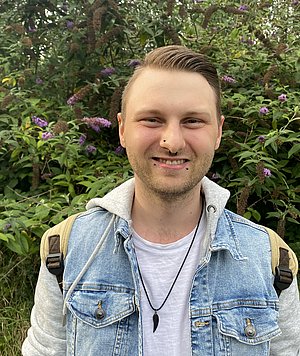- WE-Heraeus-Seminar -
The 755th Wilhelm and Else Heraeus-Seminar was part of an international series of conferences on reactive molecules called ISRIUM (international conference on reactive and unusual molecules) and organized with the help of RESOLV and the WE-Heraeus foundation. This is further reflected in the topic of the conference “Solvation Chemistry and Reactive Molecules”. RESOLV itself deals with the question “how the solvent is involved in the control, mediation and regulation of chemical reactions” in a highly interdisciplinary research field.[1] This was combined with the research on reactive molecules. Reactive molecules are classes of very short-lived species that readily react to more stable compounds, for example the well-recognized “free radicals”, carbenes, or carbocations. Their observation often requires sophisticated experimental techniques like ultrafast or matrix isolation spectroscopy.
For the “science” part of the Heraeus-Seminar, more than 30 researchers presented their ongoing work by giving talks and so called “hot topics”, which were short talks presented by young researchers. Furthermore, other PhD students had the chance to present their recent results in form of posters during two sessions. But, alongside scientific talks and posters the conference offered a range of opportunities to connect with other researchers. There were breaks to grab a coffee and eat some cake as well as activities during the excursion. We were for example, after a cruise over the Rhein, visiting Linz am Rhein, a beautiful small city with even more beautiful, historic buildings. Then, we had dinner at a local vineyard, enjoyed our time and got into more personal conversations.
- My impression -
For myself, the whole conference was a unique, not-everyday experience. I learned a lot about current research in the field of solvation science and reactive molecules and got the opportunity of presenting my own results. However, there were two occasions that were particularly inspiring. The first one was the “cake-session” with Uta. Uta Wille is professor of chemistry at the University of Melbourne and works, for example, on nitrogen fertilizers and inhibitors. Between coffee and cake, we could get in touch about our research interests and discuss her talk about oxidative stress caused by nitrogen dioxide and ozone in biological systems in more detail. Typically, coffee breaks gave a good and “low-threshold” opportunity to speak with other researchers about their research and ask questions.
The second highlight was surprisingly the last talk on the last day. After 6 days everybody seemed a bit exhausted from all the talks and events. But nevertheless, the very last talk was one of the most inspiring ones even though it was not connected to my own research in any point. Rainer Herges, who is a professor of chemistry at the University Kiel, talked about an early detection method for cancer by hyperpolarized magnetic resonance imaging (HP MRI). For this, they constructed a prototype that generates a drug used for HP MRI. In general, changes in the metabolism of cells occur for certain diseases.[2] One of those metabolic pathways is the glycolysis in which the body gains energy by oxidizing glucose to pyruvate. Cancer cells shift this pathway so that a different product, lactate, is gained instead of pyruvate. This phenomenon is called the Warburg-effect and can be used to detect tumors due to the increased glucose consumption of the cells. Different methods are known that use the metabolic pathways to detect and observe cancer cells with their respective advantages and drawbacks. One example is the use of hyperpolarized 13C-pyruvate (a pyruvate with one 13C-isotope that is hyperpolarized, which increases the signal strength by magnitudes). Pyruvate is converted into lactate and can be recognized by HP MRI. Abnormal cells can then be recognized by the increased lactate production due to the mentioned Warburg-effect. Herges and his coworkers build up on this well-known method.[3] The main problem for HP MRI in routine use is the availability of portable, commercially available polarizers to synthesize the hyperpolarized species. Such a prototype was constructed by the Herges-team with a duty cycle to produce one dose in 1 minute. A fast synthesis is required since hyperpolarized pyruvate decays extremely fast. Due to their constructed prototype they expect a benefit to the routine use of the HP MRI technique for the early detection of cancer. The goal is to build a commercially available, automated system, which allows to measure images routinely in a reasonable timeframe.
All in all, the WE-Heraeus-Seminar was a great occasion to look at the current research outside my own bubble, to meet scientists from all other the world, and to get feedback on my own work from a different perspective. I can suggest every young scientist to use these occasions to talk with other researchers. There is barely an easier way to connect with others.
[1] www.solvation.de (accessed Nov 15,2023).
[2] Di Gialleonardo, V. et al. Semin Nuc Med. 2016, 46, 1, 28. DOI: 10.1053/j.semnuclmed.2015.09.004.
[3] Ellermann, F. et al. Nat Comm. 2023, 14, 4774. DOI: 10.1038/s41467-023-40539-9.
-----------------------------------------------------
About the author




